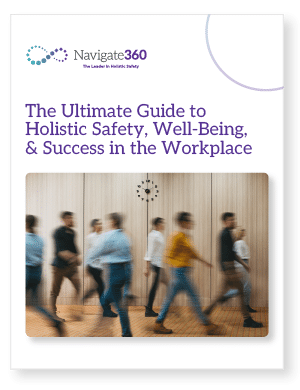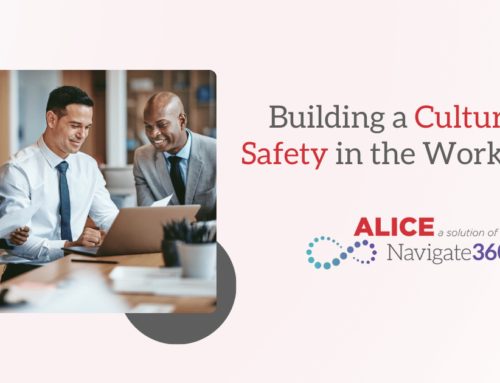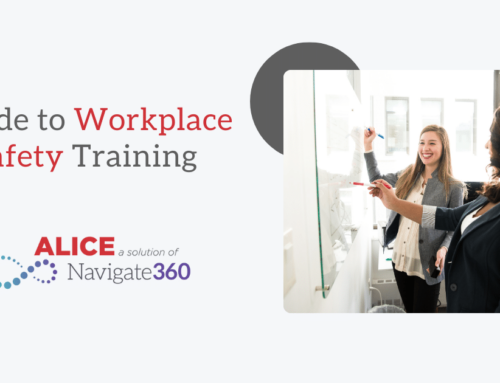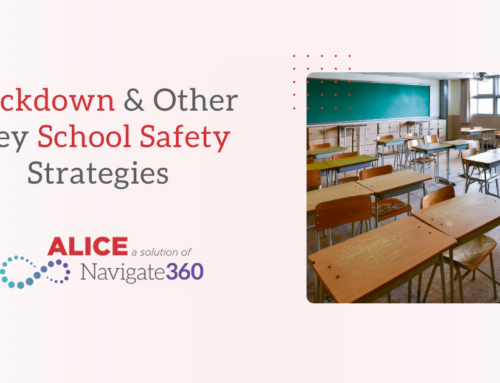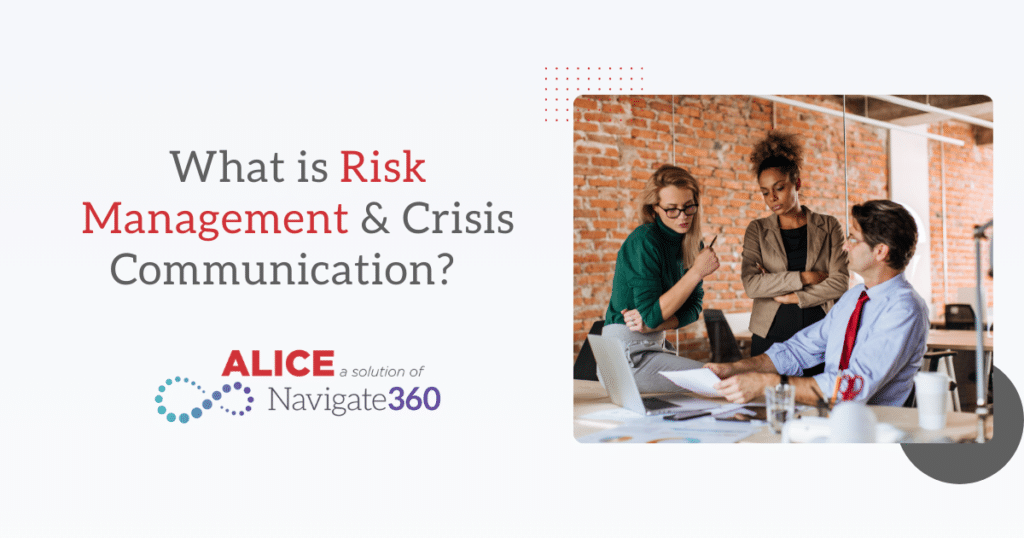
Organizations face a variety of risks that can impact their operations, reputation, and even long-term survival. Risk management and crisis communication are crucial components of any organization’s overall safety management. Having these tools in place can help companies mitigate risks and ensure clear and effective communication during crises.
But what is risk management and crisis communication? This blog will explore the basics of risk management, define the first steps to implement it, and discuss how crisis communication aids in these efforts to safeguard your organization.
What is Risk Management?
Risk management is the process of identifying, analyzing, preparing for, or responding to risks that could negatively affect an organization. Such risks can include operational issues, financial disruptions, cybersecurity threats, active assailants, natural disasters, and reputational risks. A good risk management program not only deals with these risks but also creates plans to reduce or avoid them.
The key to understanding risk management lies in its proactive approach. By anticipating possible threats and creating a risk management plan, organizations can reduce the impact of unexpected events. This helps ensure business continuity and protects their workers and assets.
What is the First Step in Risk Management?
The first step in risk management is risk identification. This involves a thorough examination of potential risks that could affect the organization. Identifying risks may seem straightforward, but it requires a deep understanding of the organization’s operations, as well as external factors that could pose a threat. For instance, safety professionals often assess physical security risks, while cybersecurity experts focus on digital threats.
By identifying risks early, organizations can categorize them based on their likelihood and potential impact. This step also enables the creation of a risk register, a crucial tool in any risk management program that catalogs and prioritizes identified risks for further action.
Key Steps in a Risk Management Plan
Once risks are identified, the next steps in the risk management process include:
-
- Risk Assessment: This is the first and most important step of risk management. This step involves evaluating the severity and likelihood of identified risks. Safety professionals conduct risk assessments to determine which risks to address immediately and which they can manage with existing resources. Here, organizations also define their risk appetite, which refers to the level of risk they are willing to accept in pursuit of their objectives.
- Risk Mitigation or Risk Reduction: After assessing the risks, the organization develops strategies to mitigate them. These strategies could involve risk avoidance (eliminating the risk entirely), risk reduction (minimizing the likelihood or impact of the risk), or transferring the risk (e.g., through insurance).
- Risk Monitoring and Review: Risk management is not a one-time effort. It requires continuous monitoring and updating to ensure the organization remains prepared for new or evolving risks. A robust risk management plan will include regular reviews and updates to the risk register and risk management strategies.
- Education and Training: Equipping employees with the necessary skills to recognize and respond to potential risks is essential. This is where safety management training plays a crucial role. By educating your workforce on risk mitigation techniques, you help create a more resilient organization.
Types of Risks
Organizations face various types of risks that need to be managed, including:
- Operational Risks: Disruptions in day-to-day activities, like equipment failure or supply chain issues.
- Financial Risks: Fluctuations in market conditions or currency rates impacting profitability.
- Reputational Risks: Negative public perception or scandals harming an organization’s image.
- Environmental Risks: Natural disasters, like earthquakes or floods, that could disrupt operations.
- Cybersecurity Risks: Data breaches or cyberattacks targeting sensitive information.
Understanding and categorizing these risks is essential for developing a comprehensive risk management plan.
Crisis Communication and Its Role in Risk Management
While risk management focuses on identifying and mitigating risks, crisis communication ensures the organization can respond effectively during a crisis. A crisis communication plan lays the groundwork for how information will be shared with employees, stakeholders, and the public during an emergency. This is especially critical in situations involving natural disasters, security breaches, or significant operational disruptions.
Crisis communication is often considered the “public face” of risk management. It involves delivering clear, accurate, and timely information to prevent misinformation and manage public perception. This helps maintain trust in the organization even during challenging times.
Developing an Effective Crisis Communication Plan
An effective crisis communication plan is an essential part of risk management. It should outline:
- Roles and Responsibilities: Identify the crisis management team and their specific roles. This includes leadership, communication officers, and any external partners.
- Communication Channels: Determine how messages will be delivered. Will you use email, phone calls, social media, or press releases? Ensuring multiple channels are available is key to reaching a wide audience quickly.
- Pre-Approved Messaging: Pre-draft essential messages for different types of crises. These can be updated as the situation evolves, but having a foundation of key messages ensures consistency and prevents delays.
- Social Media Monitoring: In the digital age, social media can amplify a crisis in real-time. Monitoring social platforms allows organizations to quickly address misinformation and maintain control of their narrative.
How Risk Management & Crisis Communication Work Together
Risk management and crisis communication are interdependent. Risk management helps prevent or mitigate the impact of potential crises, while crisis communication ensures that when a crisis does occur, the organization can manage its response effectively. By integrating these two disciplines, organizations are better equipped to handle both anticipated risks and unexpected emergencies.
For example, a well-crafted risk management plan may reduce the likelihood of a data breach, but if one occurs, a robust crisis communication plan can help manage the fallout, maintaining customer trust and minimizing damage to the brand.
Why Your Organization Needs a Risk Management and Crisis Communication Plan
No organization is immune to risks, but those that prepare can weather crises more effectively. By implementing a comprehensive risk management program and a well-thought-out crisis communication plan, your organization can:
- Mitigate Risk: Reducing the impact of potential threats ensures that your organization can continue operating smoothly, even in the face of adversity.
- Ensure Business Continuity: A crisis doesn’t have to mean the end of operations. With proper planning, your organization can maintain key functions and avoid costly disruptions.
- Protect Your Reputation: How an organization communicates during a crisis can define how it is perceived by the public. A clear, transparent, and timely response builds trust with employees, customers, and stakeholders.
- Comply with Regulations: Many industries are required to have risk management and crisis communication plans in place to comply with safety regulations and standards.
A Holistic Approach to Risk Management
Risk management and crisis communication are essential components of a comprehensive safety strategy. By taking proactive steps to identify risks, develop mitigation strategies, and plan for communication during crises, organizations can ensure they are well-prepared for whatever challenges may come their way. Whether you’re creating your first risk management plan or refining an existing one, investing in these areas will safeguard your organization’s future.
Navigate360 is at the forefront of redefining safety, encompassing both physical security and emotional well-being. As your partner in holistic safety, we provide the tools and training needed to create the safest possible environment where people work, learn, and gather
The Ultimate Guide to Safety, Well-Being, & Success in the Workplace
Download our guide and learn how to support your employees’ physical and mental health for a safer, more secure workplace.

